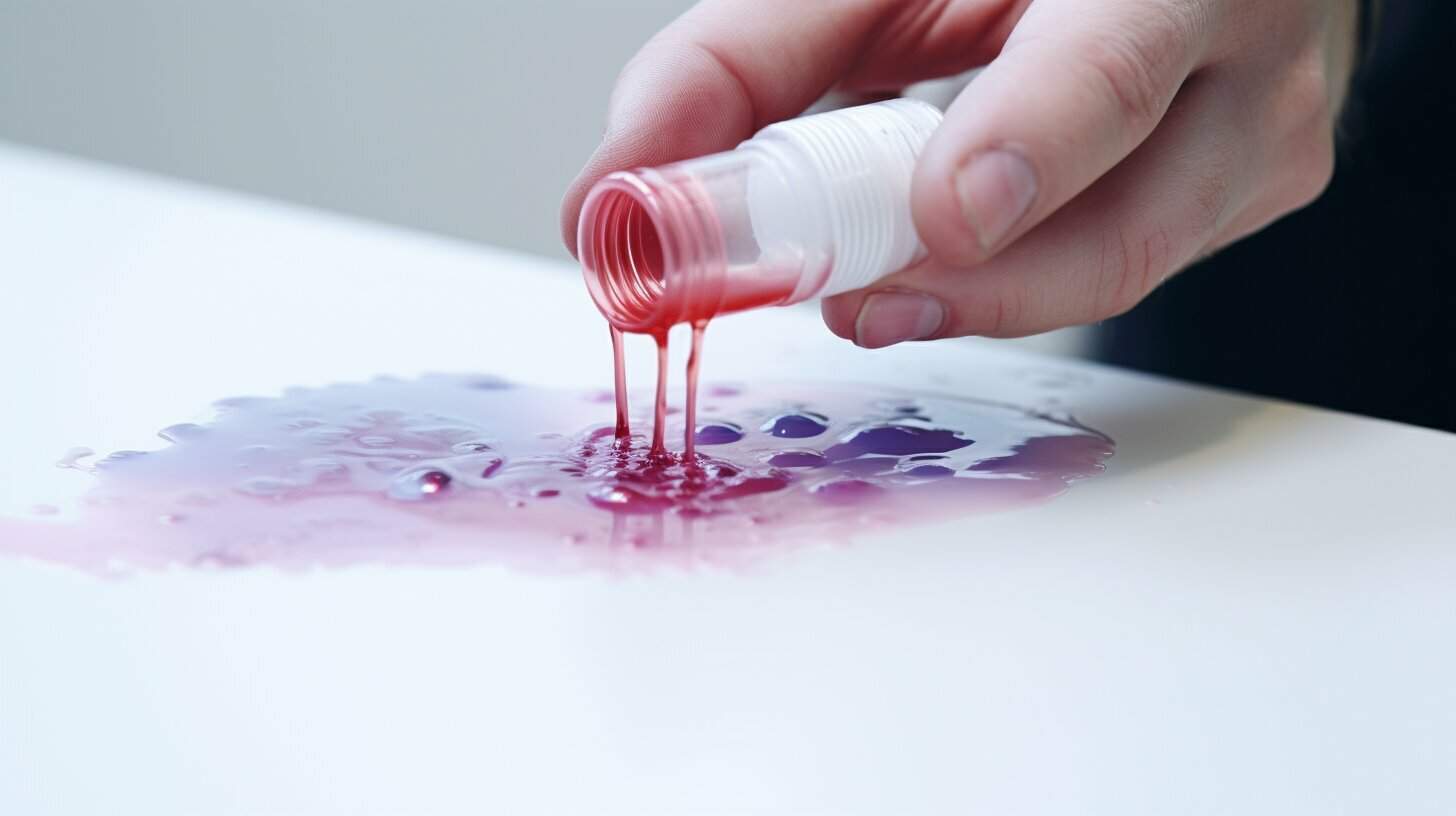Beards have become increasingly popular over the past few years, with men everywhere embracing the facial hair trend. While some may see it as a way to enhance their masculinity, others simply enjoy the look and feel of having a beard. However, this rising popularity has also led to an increase in questions about how beards may affect one’s body, particularly when it comes to sweating.
Contents
- 0.1 The Connection Between Beards and Sweat
- 0.2 The Popularity of Beards
- 0.3 Debunking Myths About Beards
- 1 The Science Behind Sweating
- 2 The Relationship Between Beards and Sweat Glands
- 3 The Impact of Beard Length on Sweating
- 4 Personal Experiences with Beards and Sweat
- 5 Hygiene Practices for Bearded Individuals
- 6 The Importance of Regular Washing
- 7 Trimming, Shaping & Conditioning
- 8 Conclusion
The Connection Between Beards and Sweat
One of the main concerns that people have when it comes to beards is whether or not they make you sweat more. After all, with all that extra hair covering your face and neck area, it seems logical that your body temperature would rise as well.
However, despite what you may have heard or read online, there is very little scientific evidence to support this claim. Studies have shown that whether or not you sweat more with a beard largely depends on other factors such as physical activity levels and overall health.
The Popularity of Beards
It’s no secret that beards have become a hot fashion trend in recent years. From hipsters to businessmen, more and more men are sporting facial hair. And while there are certainly some who wear beards simply because they like the way they look, there are many who believe that having a beard makes them appear more rugged or manly.
But regardless of why someone chooses to grow a beard, there is no denying that it has become a defining trait for many men. With so many people now sporting facial hair regularly, it’s natural that questions would arise about how beards can impact one’s overall health and well-being.
Debunking Myths About Beards
Despite what some people believe about beards making you sweat more or causing skin irritation and acne breakout under your beard, the truth is that facial hair does not have a significant impact on sweat gland activity or distribution. That being said, it is important to take care of your beard properly to avoid any hygiene issues. Regular washing and grooming can help prevent skin irritation or infections caused by trapped dirt and bacteria.
While having a beard may not necessarily lead to excessive sweating or negative health effects as some may believe, it is still important to maintain proper hygiene practices when growing facial hair. So go ahead and embrace the beard trend if you feel so inclined – just make sure you keep it clean and well-manicured!

The Science Behind Sweating
Sweating is a natural and necessary process that helps regulate body temperature, which is essential for survival. When we get too hot, the sweat glands located in our skin produce sweat, which then evaporates and cools our body down. However, this process can be affected by various factors.
Firstly, genetics play a significant role in how much we sweat. Some people are simply born with more active sweat glands than others.
This can explain why some individuals seem to perspire heavily even when doing minimal physical activity while others barely break a sweat during intense workouts. Secondly, age and gender also affect sweating.
As we age, our bodies tend to become less efficient at regulating temperature due to changes in hormone levels and decreased muscle mass. As for gender, studies have shown that men generally have more active sweat glands than women, which could explain why they tend to sweat more overall.
Physical activity plays a huge role in sweating as well. When we engage in exercise or any other strenuous activity that raises our body temperature, it triggers our sweat glands to start producing more sweat as a way of cooling us down.
Sweating is a complex process that involves several factors such as genetics, age, gender, and physical activity. While it may seem inconvenient or embarrassing at times when we’re drenched in perspiration on hot summer days or during intense workouts but it’s important to remember that sweating is the body’s natural way of keeping us cool and healthy.
The Relationship Between Beards and Sweat Glands
Describe the structure and function of sweat glands in the skin
Before delving into whether having a beard can impact sweat gland activity or distribution, it’s important to understand the structure and function of these small but mighty exocrine glands. Sweat glands are found all over the body and come in two varieties: eccrine and apocrine.
Eccrine sweat glands are responsible for regulating body temperature through the secretion of a watery fluid that evaporates on the surface of the skin. Apocrine sweat glands, on the other hand, are found predominantly in areas with hair follicles (ahem, like your face when you have a beard) and secrete a thicker fluid that can sometimes lead to odor when broken down by bacteria on the skin.
Explore whether having a beard can impact sweat gland activity or distribution
Now onto what we’re here to discuss: does having a beard affect how much your sweat glands produce or where they’re located? While there isn’t currently extensive research on this topic, some studies suggest that facial hair may indeed impact sweating patterns. One study from 1980 found that men with beards had more apocrine sweat gland activity than those without.
Another more recent study suggests that beards may inhibit eccrine sweating due to reduced airflow around the sweat-producing pores. However, it’s important to note that these findings aren’t definitive and there is still much we don’t know about how beards impact our bodies natural processes.
It’s also worth considering individual differences – one person may notice no difference in their sweating with or without a beard while another may experience significant changes. So what does all this mean for you?
If you do notice changes in your sweating patterns after growing out your facial hair, it may not necessarily be cause for concern – everyone’s body is different. However, if excessive sweating or odor is impacting your quality of life, it’s always a good idea to speak with a healthcare provider who can provide individualized recommendations.
The Impact of Beard Length on Sweating
The Case for Longer Beards
Many people believe that longer beards lead to increased sweating, but the evidence is mixed. Some studies have found that longer beards do indeed cause more sweat to accumulate in the hair follicles and on the skin’s surface. This may occur because longer hair creates more surface area for sweat to collect, or because it traps heat against the skin.
The Case Against Longer Beards
On the other hand, some research suggests that beard length has little effect on sweating. For example, a study published in the Journal of Investigative Dermatology found that beard length did not significantly impact sweat gland activity in men. The study did find, however, that hair density and thickness played a role in how much sweat was produced.
Factors to Consider
There are many factors to consider when examining the relationship between beard length and sweating. Hair density and thickness may be just as important as beard length when it comes to how much sweat accumulates on the face and neck. Additionally, external factors like ambient temperature and physical activity level can also impact sweating regardless of facial hair.
At the end of the day, whether or not having a long beard makes you sweat more may depend on individual differences such as genetics and lifestyle habits. Individuals with facial hair need to pay attention to their own body’s responses and adjust their grooming habits accordingly.

Personal Experiences with Beards and Sweat
The Sweaty Beard: My Personal Experience
As someone who has proudly sported a beard for years, I can confirm that having a beard does indeed make you sweat more. In the summer months, my beard becomes a hot, sticky mess and it feels like I’m constantly wiping sweat from my face.
It’s not just me either; many of my bearded friends have shared similar experiences. The hair on our faces seems to trap heat and moisture, making us feel like we’re wearing a warm scarf around our necks.
Cultural Attitudes Towards Facial Hair
In some cultures, facial hair is seen as a symbol of virility and masculinity. However, this also means that sweating while sporting a beard can be seen as unappealing or even unmanly.
This attitude towards sweatiness may contribute to the stigma some men feel about sweating excessively with facial hair. But let’s be real – sweating is a natural bodily function and shouldn’t be demonized simply because it happens under our beards.
Breaking the Stigma: Embracing Your Sweaty Beard
Instead of feeling ashamed or embarrassed about sweating with a beard, let’s embrace our bodies natural processes. There are ways to manage excessive sweating such as using antiperspirants (yes, they make them specifically for your face), carrying around blotting papers, or even investing in personal fans. We should also challenge cultural attitudes towards sweatiness – sweating doesn’t make us any less masculine or attractive as long as we maintain good hygiene practices.
Having a beard does indeed make you sweat more but don’t let that stop you from embracing your natural body functions. Let’s break down the stigmas surrounding sweatiness with facial hair and focus instead on staying cool and confident during those hot summer days.
Hygiene Practices for Bearded Individuals
Let’s get one thing straight: a beard is not an excuse to neglect basic hygiene practices. It may seem obvious, but some bearded individuals need to be reminded that their facial hair requires just as much if not more attention than the hair on their head.
First and foremost, regular washing is essential. This means using a dedicated beard shampoo or conditioner at least a few times a week.
Don’t use regular soap or shampoo on your beard as it can strip it of its natural oils and lead to dryness and breakage. Trimming your beard regularly is also important for maintaining good hygiene.
An unkempt beard can trap dirt, food particles, and bacteria leading to bad odors, skin irritation, and potential infections. Don’t forget about the skin beneath your beard either – exfoliating regularly can help remove dead skin cells that can accumulate under facial hair.
The Importance of Regular Washing
Washing your beard should become a habit if you want it to look its best, feel soft, and smell great. It’s easy for grime from everyday life – think food, drinks, and environmental pollutants – to get trapped in those thick hairs leaving unpleasant smells behind. Make sure to fully wet your beard before applying any washes or shampoos.
Trimming, Shaping & Conditioning
Regular trimming keeps the length of your facial hair in check while conditioning helps replenish moisture lost during washing thus keeping it looking healthy and well-nourished. Trimming should also include shaping so that you create distinct lines along the cheeks, neckline, etc.
Conclusion
Having a beard doesn’t mean you have to look like a Neanderthal with poor hygiene practices. With regular grooming habits such as washing, trimming, shaping, and conditioning, a well-groomed bear can make you look great and give you a sense of pride. With the right care, your facial hair could even become your signature aesthetic – so go ahead and embrace your inner lumbersexual!
Amazon and the Amazon logo are trademarks of Amazon.com, Inc, or its affiliates.








Leave a Reply